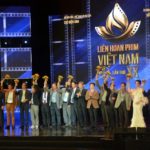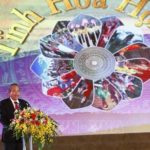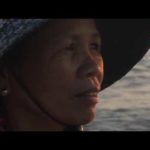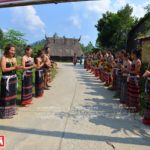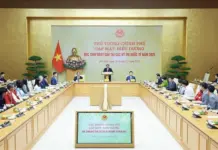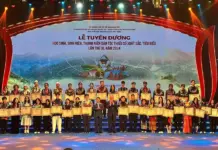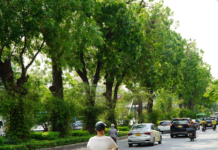
|
Director Pawo Choyning Dorji presents his latest film, “The Monk and the Gun,” which represents Bhutan at the Academy Awards. This thought-provoking narrative explores the clash between Western values and traditional South Asian culture, combining humor, social commentary, and deep exploration.
Set against Bhutan’s transition to democracy in 2006, “The Monk and the Gun” takes audiences on a whimsical journey through a society grappling with change. Drawing on his experiences in Bhutan and the United States, Dorji brings a unique perspective and sheds light on how Bhutan is perceived by the outside world.
The film playfully explores the enigmatic question of why a monk would want a gun, creating a shrewdly satirical fable that examines the clash between Western ideals and Bhutanese culture. The film keeps viewers guessing about the characters’ motivations, building suspense that pays off beautifully in the end.
The film’s humor arises from the Bhutanese citizens’ bewilderment at the concept of elections, contrasting American emphasis on popular rule with Bhutan’s voluntary transition. The director cleverly comments on the polarized American political landscape through this situation, highlighting how some Bhutanese citizens are satisfied with their existing system.
As the film unfolds, it becomes clear that not everyone is happy with the changes taking place in Bhutan. The monk, portrayed by Tandin Wangchuk, represents a dissenting voice questioning Bhutan’s shift from Buddhism to consumerism and self-interest. Dorji masterfully keeps the monk’s intentions ambiguous, challenging the audience to interpret his actions.
The central plot device, an antique rifle from the U.S. Civil War, becomes a symbol of Western influence in the remote Himalayan kingdom. The pursuit of this rare firearm by multiple characters, including a shifty American named Ronald Colman, underscores the film’s critique of how Western concepts have infiltrated and sometimes corrupted Bhutanese society.
While Bhutan’s introduction of elections may seem empowering, Dorji’s film raises the question of whether this shift towards a more self-interested American mentality is truly progress. Through intricate storytelling and interconnected elements, the film gradually unravels its underlying message, culminating in a satisfying finale.
In “The Monk and the Gun,” Pawo Choyning Dorji invites viewers to reflect on the impact of Western influence on a society that has remained relatively untouched for centuries. With humor, wit, and a touch of mystery, he suggests that Bhutan has valuable lessons to offer the world as it navigates modernization and democracy. The film serves as a reminder of the power of cinema to bridge cultural divides and ignite meaningful conversations about our ever-evolving world.
Ba Ria – Vung Tau to host 2019 Vietnam Film Festival
NDO – The 21st Vietnam Film Festival, themed ‘Developing a national, humanistic, creative and integrated cinema industry of Vietnam’, will take place from November 23-27 in Vung Tau city, the southern province of Ba Ria – Vung Tau.
Cultural preservation of time-honoured coastal villages
For centuries, the customs and practices of fishermen have denoted the traditional cultural characteristics of coastal regions. However, under recent pressure from the developing economy, these traditional cultural features are facing a number of challenges. Here’s a story from the central province of Quang Nam.

